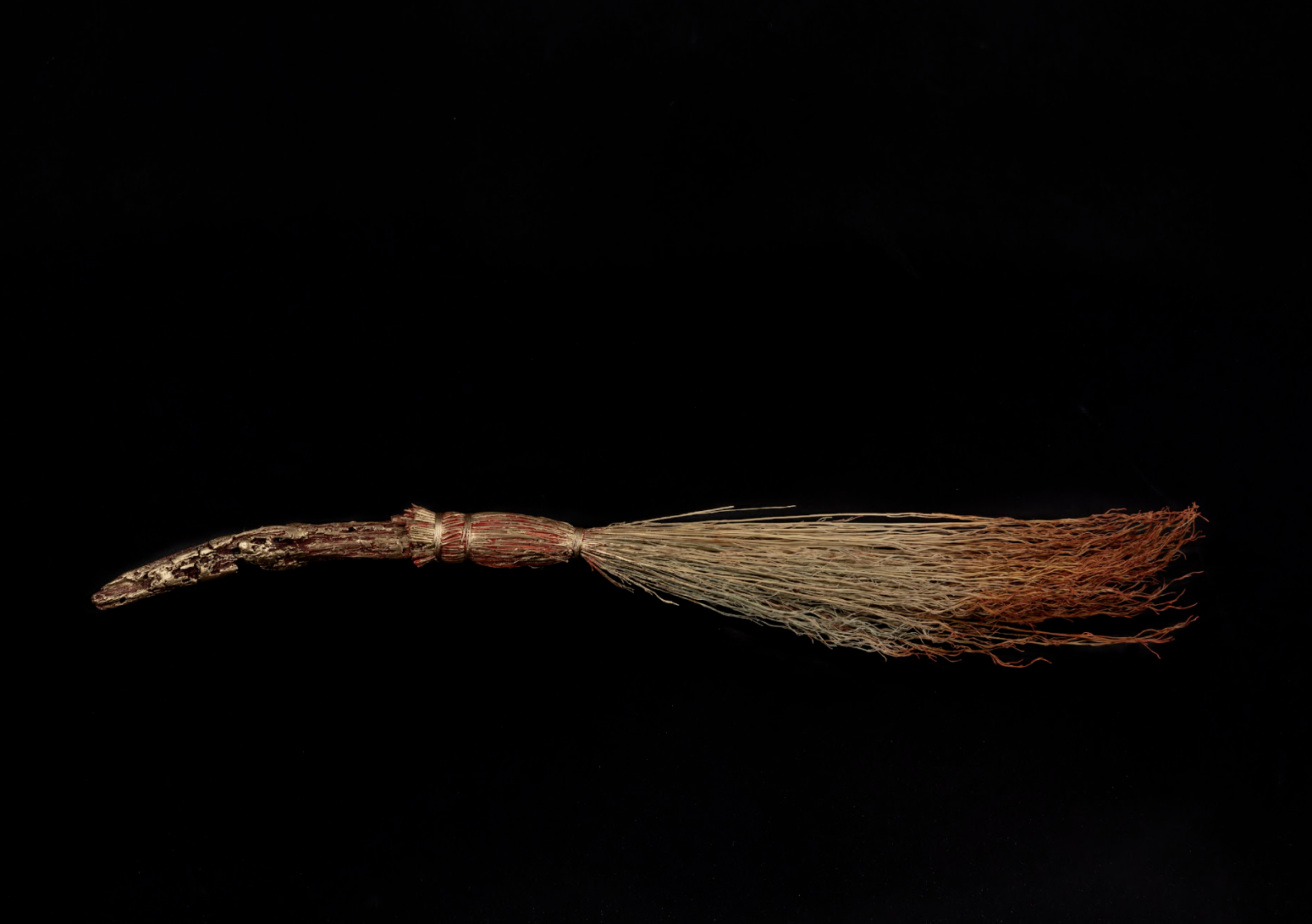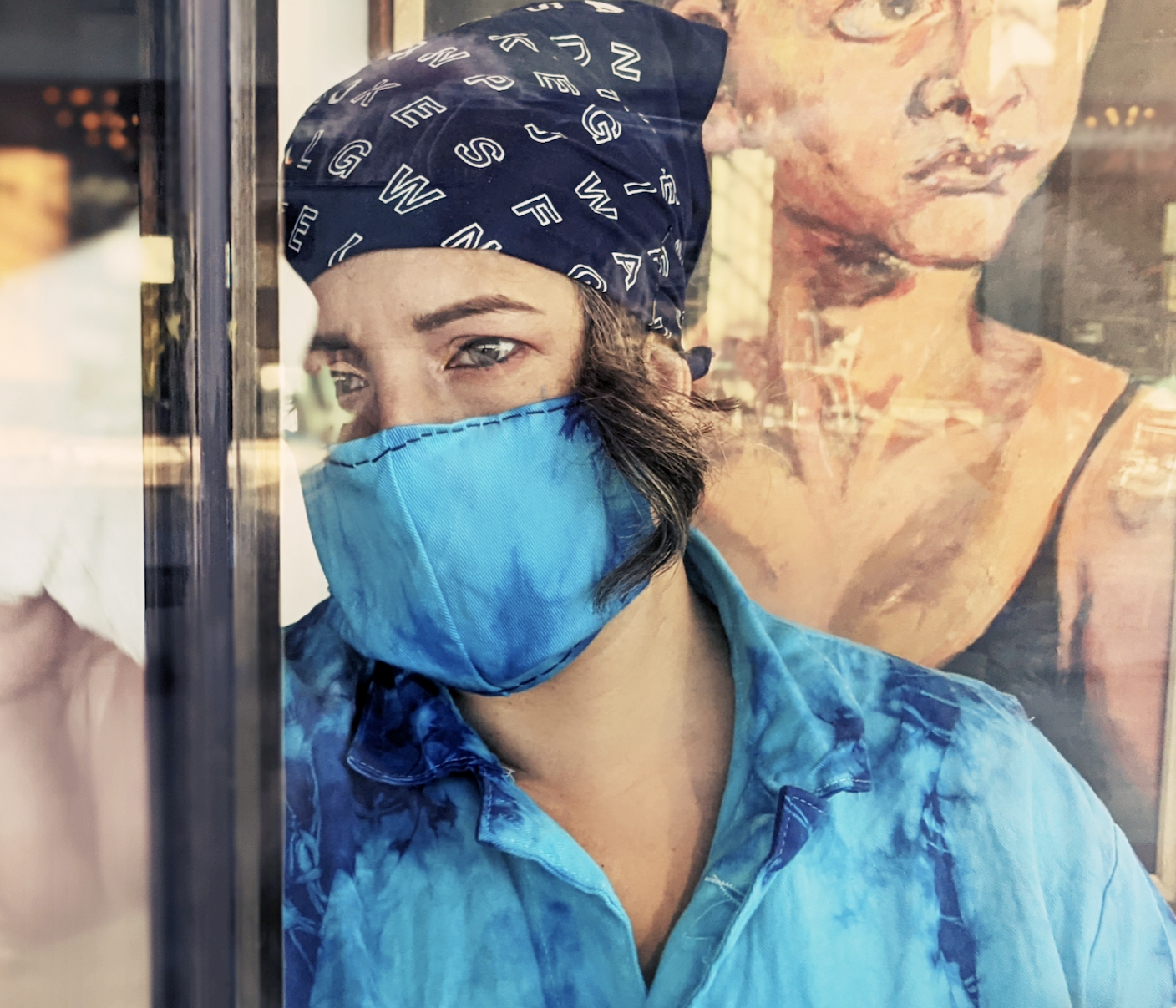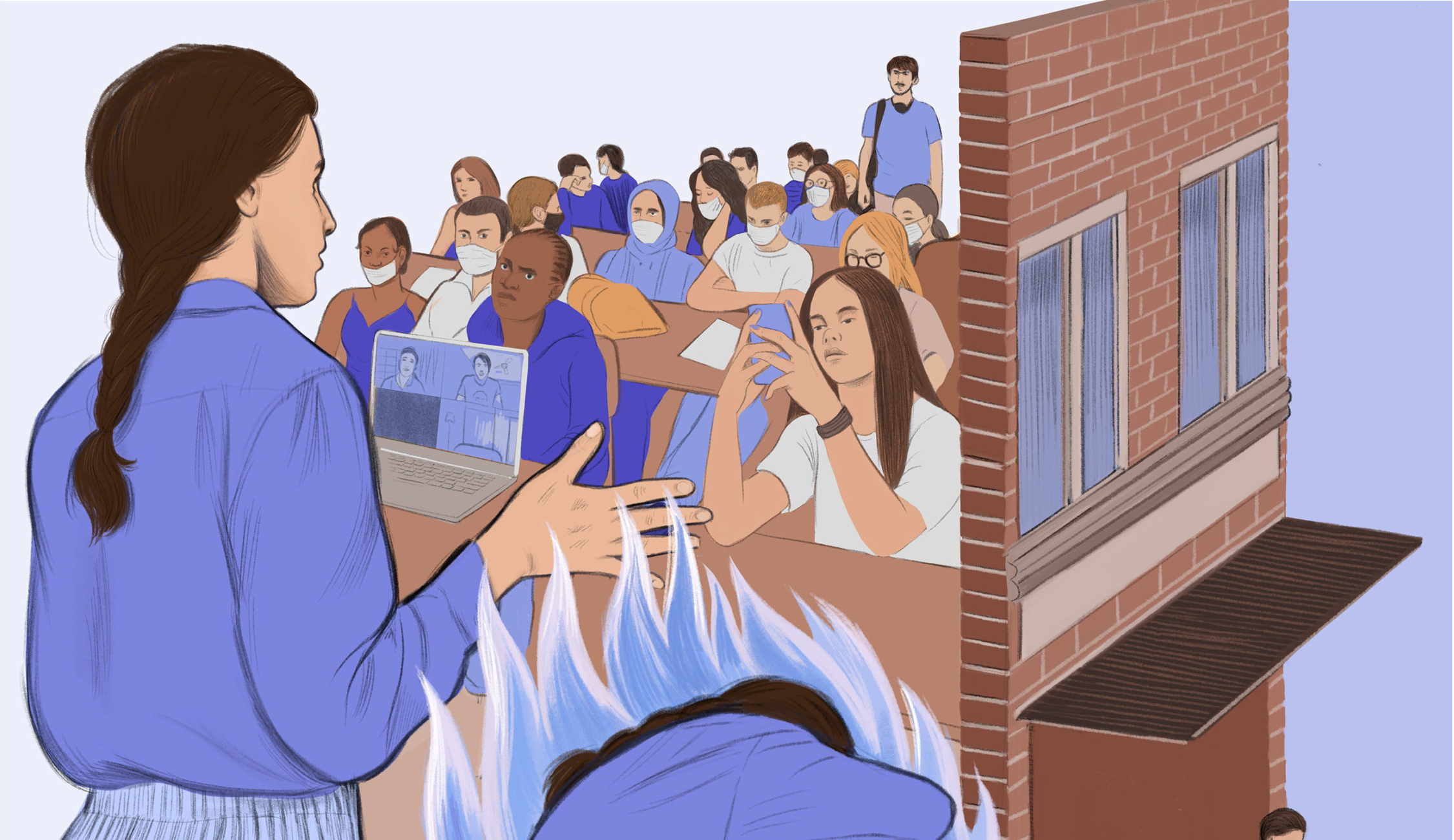Veronica Ceci held two jobs after earning her master’s degree in printmaking in 2014. The first was as a master printer at Austin’s Flatbed Press, a role that involves the skilled use of printing presses, tools, materials, and processes to help other artists realize their visions. It’s a high-status position in the art world. The second job, which Ceci took when she realized that printing wouldn’t be enough to pay the bills, was decidedly less exalted: housekeeper at a day spa, doing endless laundry and cleaning treatment rooms, bathrooms, and shared spaces after patrons enjoyed their pricey massages and facials.
Both jobs were physically demanding and required attention to detail, but one garnered dramatically more respect. “I was really struck by how much the two positions had in common, but at one I was treated like, ‘Oh, well, you’re an important person,’ and at the other, I was an invisible person,” Ceci says.
Ceci’s reflections on the value we place on cleaning—women’s work, both stereotypically and in her personal experience—inform “Keeping House,” her exhibition that was on display at the Daugherty Arts Center in Austin in September and October. It’s a tidy, single-room show of fewer than 20 pieces that manages to make an impression. Ceci’s work features sharp social critique, an appealing use of materials, and a canny appropriation of ideas from art history with barbed feminist attitude.

Consider “Working Hard, Hardly Working,” a woodcut print that depicts a scene, perhaps the lobby of an office building or a conference center, with several men standing around talking on cell phones. There’s also a feminine figure, more of a silhouette than a fleshed-out human, holding a mop and a broom. The faceless woman nevertheless grabs our attention because her hunched, angry figure is outlined in electric pink; the men are depicted in the same cool, monochrome colors as the background, existing on a less energetic plane.
“I’m pushing them back,” Ceci says of the masculine figures. “They’re usually the main characters in the narrative, the important businessmen, but they’re actually the less important characters in this particular narrative.”
This print both acknowledges the faceless invisibility routinely accorded to women and femes who clean for a living and also suggests another way of seeing. For Ceci, that kind of vision requires thinking critically about broader societal gender roles and questioning what she calls a “layer of expectation that’s on anyone who presents as a feminine person, that they’re going to be the person who clears the table, they’re going to be the person who makes the coffee.”
In Ceci’s analysis, there’s a direct line of misogyny between the identification of cleaning as women’s work and the workplace disrespect experienced by those who clean for a living. “When I went to work in an industry which is dominated by my gender and, almost as a matter of course, therefore low-paid and undervalued, I felt like I really needed to emphasize that,” Ceci says. “To be like, part of the reason you don’t respect this work is because you expect women to do it.”
The problem of workplace disrespect is searingly personal for Ceci. In 2018, she was sexually harassed by a male client at the day spa where she cleaned. She eventually left the job in part due to her dissatisfaction with how management handled the incident.
Though the prints in “Keeping House” were all made pre-pandemic—Ceci left Flatbed Press in 2019 and has refocused on sculpture, performance, and found materials since then—her critique resonates today. Cleaners cannot work remotely. Some, like Ceci, who has had lifelong respiratory problems, are at heightened risk during a pandemic, and many must choose between their jobs and their health. “There’s been a lot of talk about essential workers, but really what it is is that people consider the labor essential, but the laborer is treated as expendable. And most businesses really still aren’t safeguarding the health of their employees,” Ceci says.
Staying at home has been fruitful for Ceci. “Keeping House” includes samples from two bodies of work that she’s been making through the pandemic. The first, “White Paintings,” is a series of found-object wall hangings that convert cleaning materials into makeshift canvases. Materials used in the White Paintings include mop strings, a towel, and brush bristles. Instead of pigment and frames, they are decorated with dirt, spit, and ragged edges.
Perhaps the most arresting of Ceci’s White Paintings is the seventh in the series, “WPVII,” made up of 100 facial cloths sewn to canvas. Ceci wears makeup most days and removes it at night with a disposable cloth. At a certain point, she decided to collect the cloths into an eerie tableau of scrunched, too-colorful faces.
For Ceci, the piece is about looking critically at the detritus of a traditionally feminine mode of self-expression. “It’s saying, ‘Look at this. This is my face. This is my face a hundred times. This is what I do to be acceptable for you, and look at how distorted it is when I take it off,’” Ceci says. “Again, pulling back into that resentful emotion about the place that I’m in, in society, because of things I can’t control.”
Ceci describes her White Paintings as “an abstraction, but it’s also utilitarian, it’s quotidian. It is the object representing art, as opposed to art representing an object,” Ceci says. “They were painted by the dirt of the floor that they cleaned.”
Viewers interested in this aspect of Ceci’s work can look forward to her upcoming performance at the Contemporary Austin in January, in which she will mop the museum floor with a “canvas” made of stretched mop strings, then hang the work back on the wall.

Ceci’s Upsweep sculptures—a series of driftwood brooms that she also worked on throughout the pandemic—are an exception to the fury of disempowerment that swirls through much of “Keeping House.” Delicate and finely wrought in collaboration with broom maker Hunter LV Elliott, the brooms are perhaps the most enchanting objects in the show. Ceci describes scavenging the beaches of Galveston for aesthetically interesting driftwood, bent forms beautiful enough to both subvert and ennoble a broom’s utility for cleaning, and perhaps to also suggest the feminine magic of witches.
Even so, Ceci eventually came to see the gilded and painted brooms as complementary characters occupying the same struggle for visibility and dignity as the human housekeepers in her prints. When she sent the wood to Elliott, she learned that driftwood is uniquely ill-suited to broom-making, because it is too fragile. Elliott had to hollow out the pieces of driftwood and fill them with healthy wood so they could manage the tension of being converted into cleaning tools.
Ceci saw in that fragility a potent metaphor for the figure of an undervalued cleaner, who is often strained past her breaking point.
“To me, that really called to mind someone who would love to retire but just isn’t allowed to,” Ceci says. “The laborer who’s in a deep sleep and the alarm goes off and they’re like, ‘Oh, I have to get up to work again. I thought I was over this.’”
Opening image: “Performance Still from Futility II”. Courtesy of Veronica Ceci.




